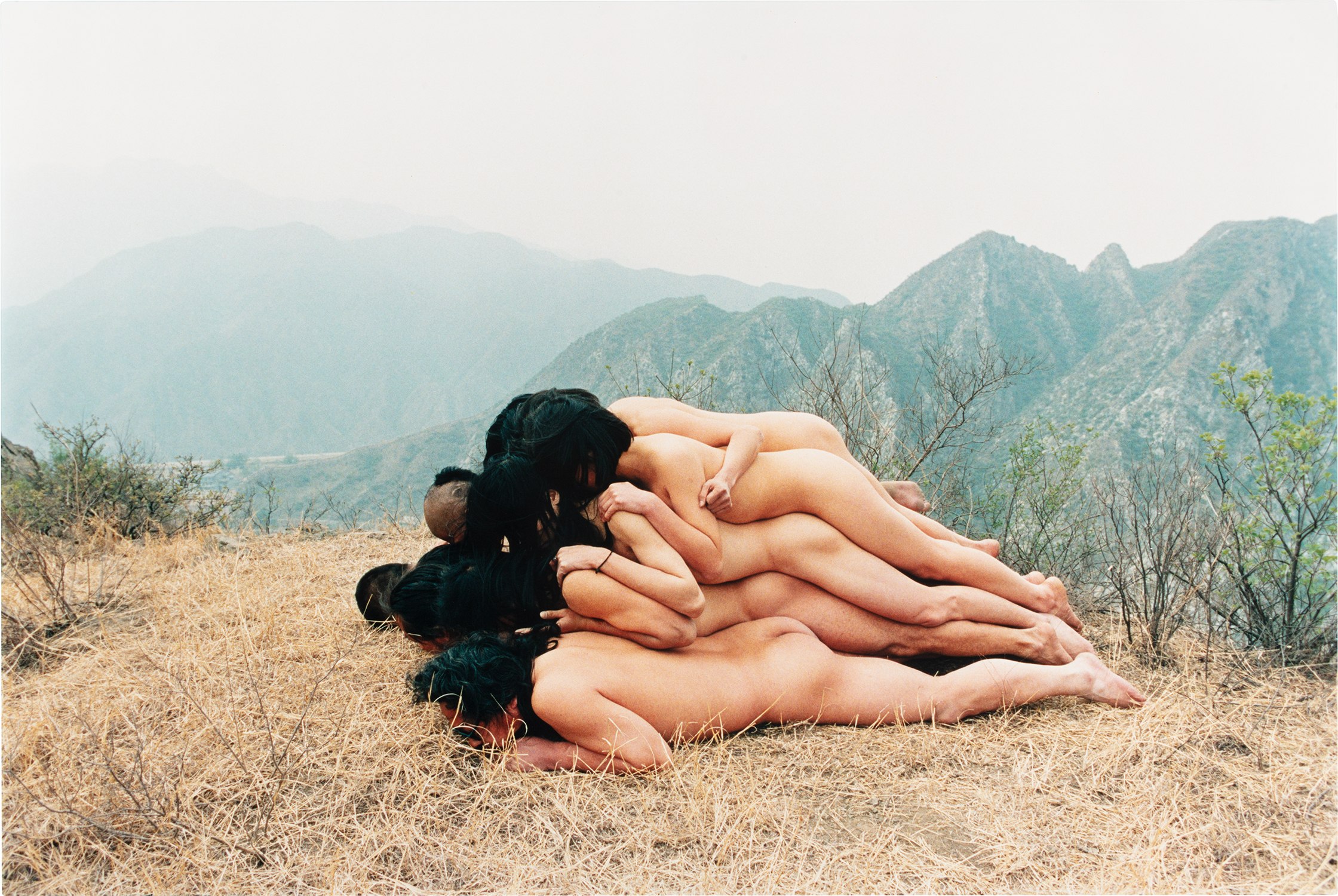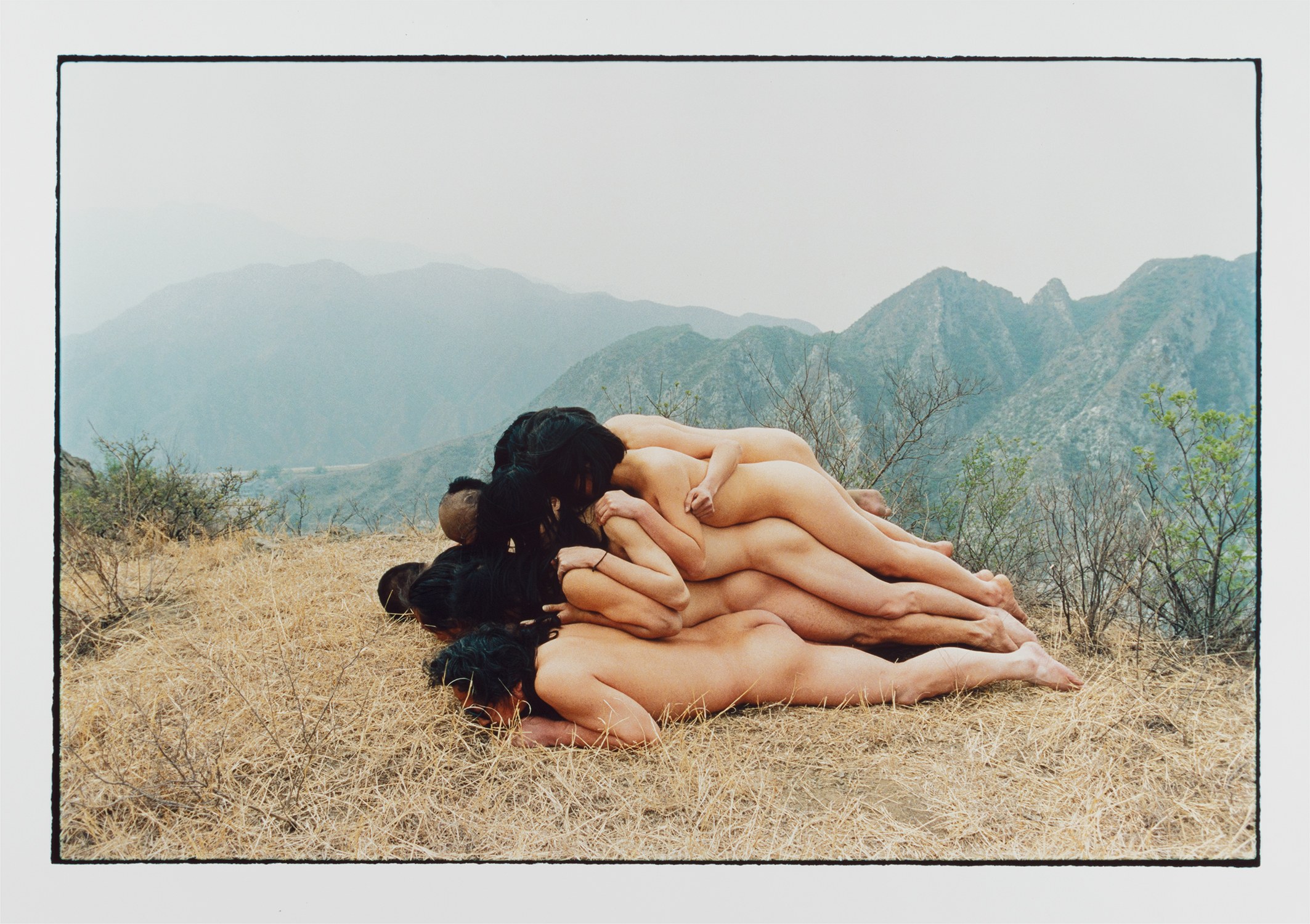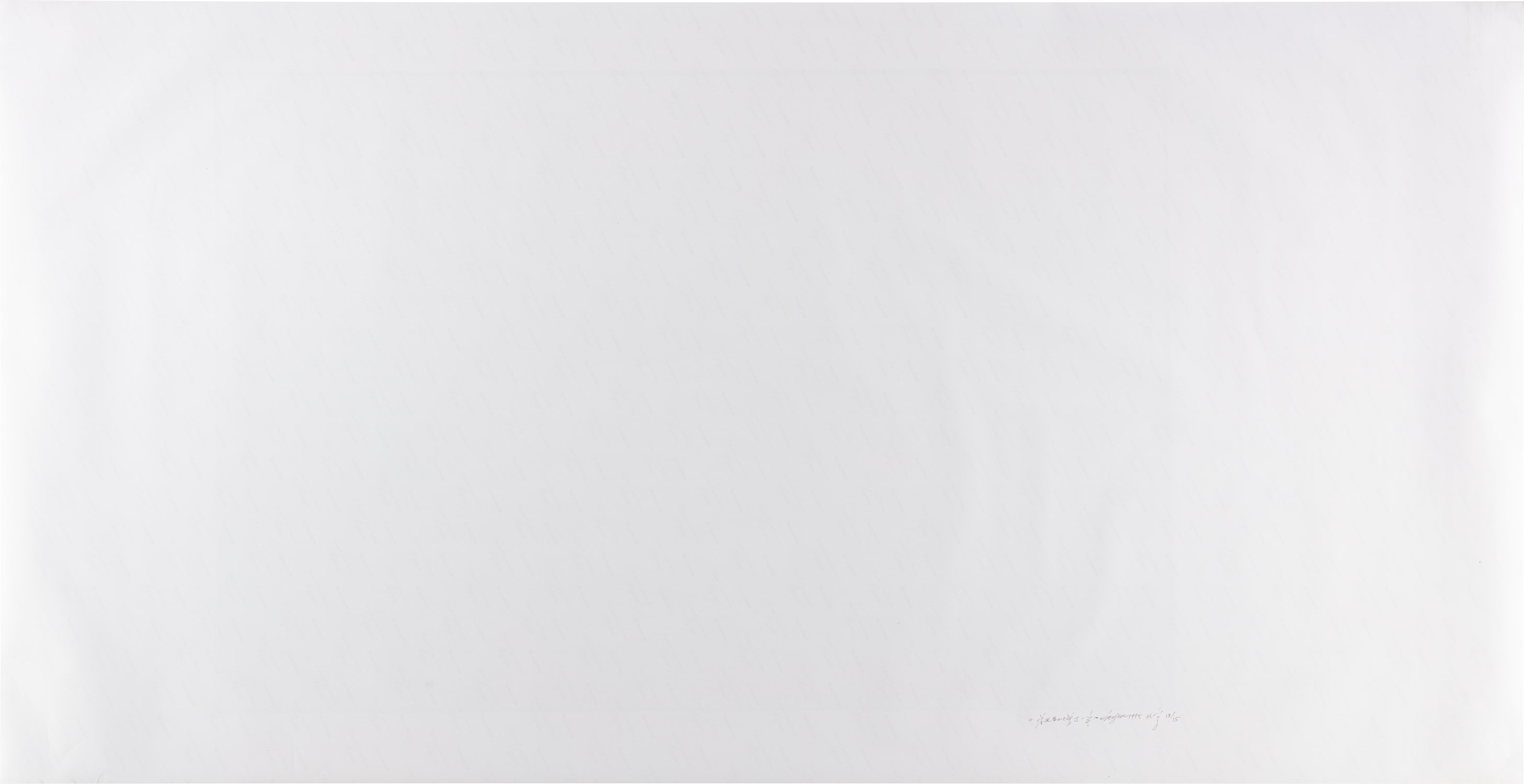







109
Zhang Huan
To Add One Meter to An Anonymous Mountain
signed, titled, numbered, inscribed and dated [in Chinese] ""To Add One Meter to an Anonymous Mountain" Zhang Huan 1995 Beijing 13/15" on the reverse
chromogenic print on Fuji archival paper
image 40 7/8 x 60 1/2 in. (103.8 x 153.7 cm)
sheet 49 7/8 x 96 3/4 in. (126.7 x 245.7 cm)
sheet 49 7/8 x 96 3/4 in. (126.7 x 245.7 cm)
Executed in 1995, this work is number 13 from an edition of 15.